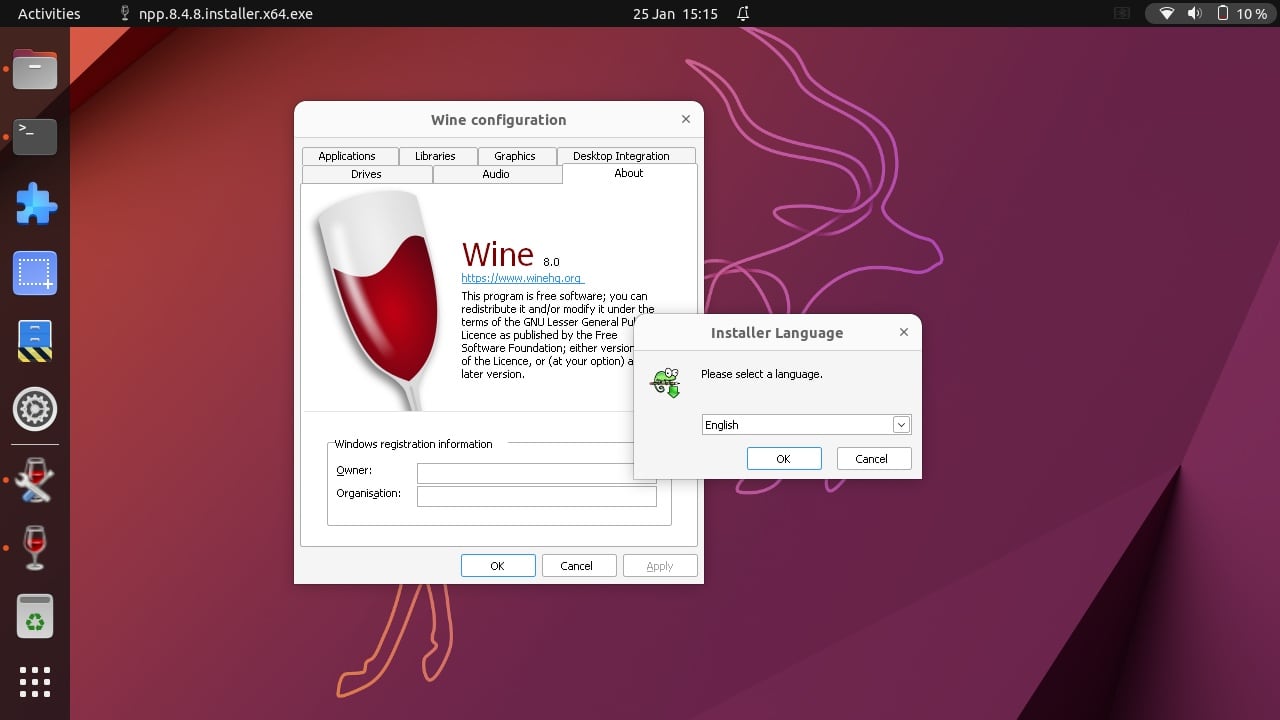How to Install the Latest Version of Wine on Ubuntu

The new Wine 8.0 release boasts better-than-ever support for running Windows apps on Linux distributions such as Ubuntu.
You can install Wine on Ubuntu from the Ubuntu Software app (or using apt at the command line), but the version of Wine available in Ubuntu is (almost always) an older version than that currently available.
If you want to install the latest stable version of Wine on Ubuntu 22.04 LTS or 22.10 follow the steps below, which I’ve adapted from the instructions available on the WineHQ wiki.
Note, to simplify this process I recommend using the command line. It is technically possible to add the official Wine repo via a GUI, but the exact steps differ depending on which version of Ubuntu you use. The CLI steps below work on ALL versions of Ubuntu, and also work on Ubuntu flavours, and Ubuntu-based distros like Linux Mint.
Install Latest Wine Release on Ubuntu
Step 1: Enable 32-bit support
First things first, you need to explicitly enabled 32-bit support.
I know for a fact that you are using a 64-bit version of Ubuntu by default — no, I’m not psychic, it’s just Ubuntu discontinued 32-bit builds back in 2017.
Despite that, the Ubuntu repos contain a lot of the relevant libraries and dependencies required to support the 32-bit architecture.
To open a new Terminal window and run:
sudo dpkg --add-architecture i386
Step 2: Add the Wine Repo Keys
To install newer versions of Wine from using Wine’s Ubuntu repo, you’ll need to ensure your system can securely communicate with it — which means importing security keys.
First, create a new keyring:
sudo mkdir -pm755 /etc/apt/keyrings
Second, import the Wine repo keys to it:
sudo wget -O /etc/apt/keyrings/winehq-archive.key https://dl.winehq.org/wine-builds/winehq.key
Step 3: Add the Official Wine Repo
Next, check your Ubuntu version from the Settings > About panel. You’ll need to know which version you’re running so that you run the correct command listed below.
If you use Ubuntu 22.04 LTS ‘Jammy Jellyfish’ (or a Linux distro based on it, such as Linux Mint 21.x) run this command:
sudo wget -NP /etc/apt/sources.list.d/ https://dl.winehq.org/wine-builds/ubuntu/dists/jammy/winehq-jammy.sources
If you use Ubuntu 22.10 ‘Kinetic Kudu’ (or a flavour, spin, derivative, etc) run this command instead:
sudo wget -NP /etc/apt/sources.list.d/ https://dl.winehq.org/wine-builds/ubuntu/dists/kinetic/winehq-kinetic.sources
Do NOT run both commands; only run the command that matches your Ubuntu version.
Step 4: Install Wine
Once done, you’re ready to do the main task: installing Wine on Ubuntu:
sudo apt update && sudo apt install --install-recommends winehq-stable
When you run this command (and enter a user password to authenticate the install) you will be presented with a long list of packages that apt will download, install and upgrade. In some cases you may also notice that some packages will be removed..
You must PAY ATTENTION to the list of removals; critical packages like ubuntu-desktop and xorg can sometimes be listed, so don’t idly whack y to proceed. If it proposes removing anything that would render your system inoperable hit n and back out.
Attempting to install Wine on Ubuntu and getting an error? You are not alone. It is common to have issues trying to install Wine from the official repo on Ubuntu systems with PPAs or proposed updates enabled. The specific conflict(s) preventing Wine from installing will vary, so try to find out which package(s) is to blame, remove them, and try again. If you are unable to resolve things try the Linux section of the Wine HQ forum.
On a vanilla Ubuntu system installing Wine from the official repo will “just” work”. Give everything listed chance to download, unpack, install, and configure itself.
Once everything installed you can close the Terminal window.
You will not find a “Wine” launcher in the Applications grid after you install Wine but you will be able to right-click on Windows installers/runtimes and open them with Wine. You may also wish to run winecfg from the command line to access the GUI Wine configuration window.

Comments